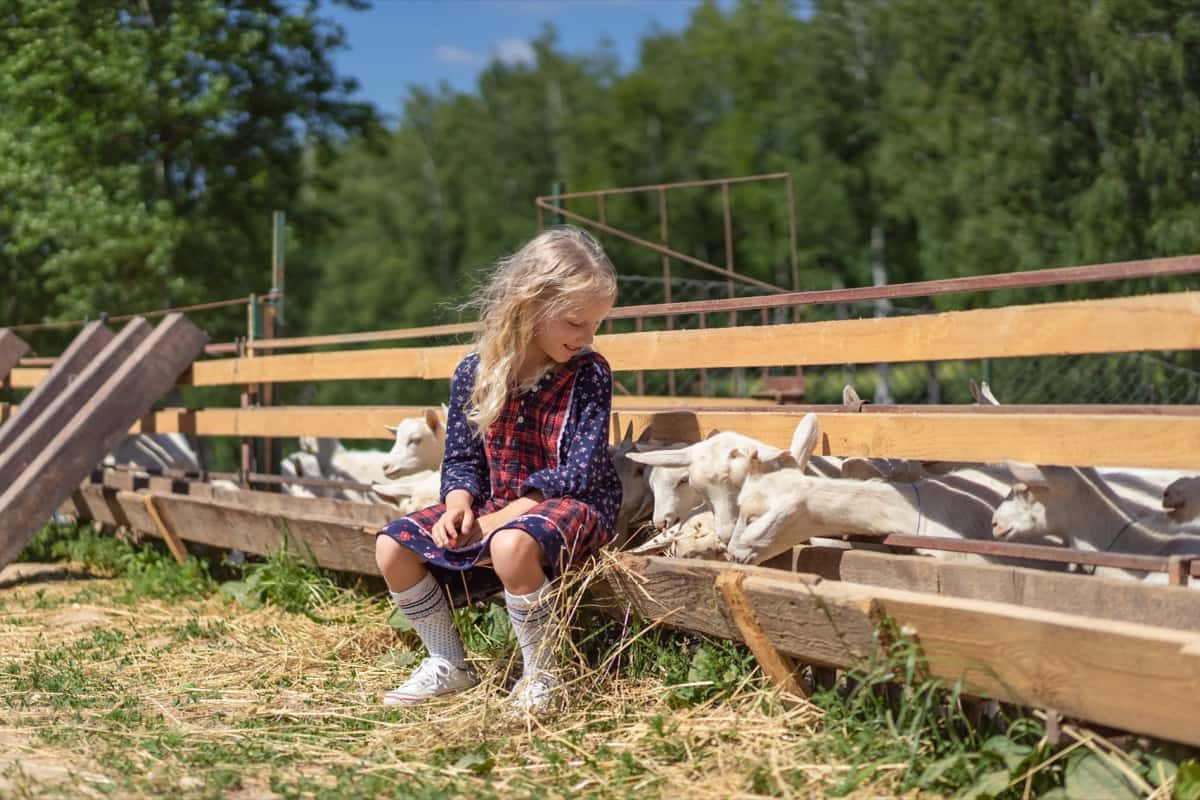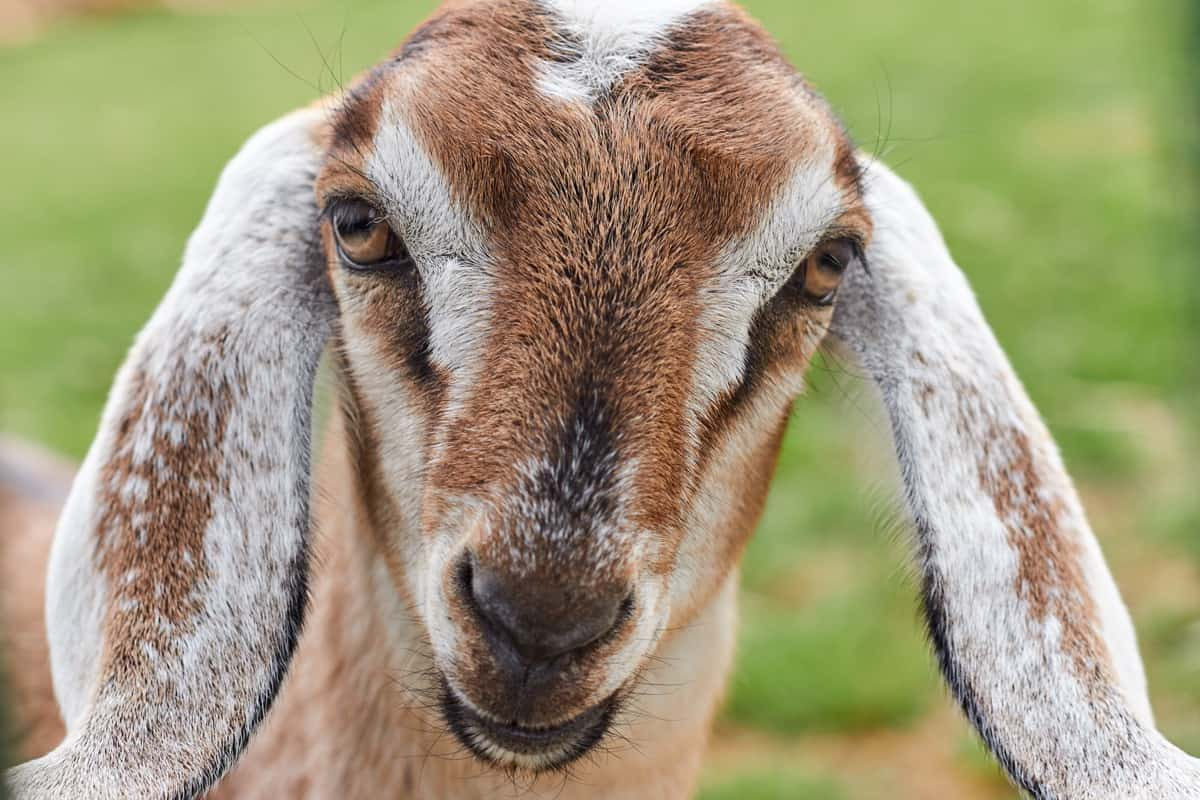Malabari goats are a well-known breed of goat in India. They are widely distributed throughout the Malabar region of Kerala and Tamil Nadu. The Calicut, Kannur, Wayanad, and Malappuram districts of Kerala, India, are home to them. Some people refer to Malabari goats as Tellicherry goats. Their main purpose is to produce meat, but they also produce milk. While Malabari goats are similar to Beetal goats, they weigh less and have shorter legs and ears.

Tellicherry / Malabari Goat Farming in India
Characteristics of Malabari Goats
- They are small to medium-sized animals. The average height at withers and body length measured 68 and 70 cm, respectively.
- The coat color is extremely variable, from completely white to completely black.
- About 40% of goats have long hair; 20% of animals (males and females) have beards.
- Males and females have small, slightly twisted horns that point upwards and backward and sometimes curve downwards, touching the skin.
- The ears point outwards and downwards, reaching up towards the nose. In some animals, the tips of the ears were curved or folded almost in half.
- The tail is thin and small. Teats are medium-sized, and the udder is small and round.
- Tellicherry goats have high growth rates, milk yields, prolificacy, and reproductive efficiency (kidding).
- The median age at first kidding has been reported as 365 days, and the median interval between kiddings is 258 days. The breed tends to produce twinnings 50% of the time, triplets 25% of the time, and quadruplets 5% of the time.
- Newborn Malabari goat kids weigh around 2.5 kg on average. Due to their high feed conversion ratio, they gain weight quickly. During its first year, a goat can gain approximately 25 kilograms (under normal conditions). The average weight of a female is 30 kg, whereas the average weight of a male is 41 kg.
- There is a Malabari breed of goat known for its low-fat meat. In the tanning (leather) industry, Tellicherry’s skin is popular.
- During lactation, the milk yield ranges from 0.5 to 1.5 liters a day with an average of 90 kg. Drinking the milk of a Tellicherry goat is very healthy and delicious. The milk of this goat will be thicker than that of other goats.
- Malabari goats are highly disease resistant and adapt well to Kerala’s hot and humid climate.
Housing for Malabari Goats
It was observed that different types of goat houses were used to house Malabari goats. Wooden houses are made from planks, bamboo, and sticks for larger flocks. Planks of wood are raised between two and four feet from the ground to form the floor. The planks are spaced 1-2 cm apart so that urine and feces can fall through the floor to the ground. In this way, the house can be properly cleaned. To separate animals into different categories, internal compartmentalization is used.
These houses are provided with temporary electricity supply arrangements. The houses are well-ventilated due to their design and construction materials. House walls are equipped with feeding mangers. Taking the animals in and out of the house is made as easy as possible with the help of a wooden ramp. A flock of five to ten animals is housed in brick blocks. Coconut leaves and bamboo are used for the roof. Electricity and feeding mangers are not provided in such houses. A cage house made of bamboo sticks is used for newly born kids.
Feeding Malabari Goats
Malabari goat flock owners often feed their goats with the minimum nutritional inputs. Most animals are kept at home and fed local green grass, leaves from Jackfruit, Coconut, Banana, and Palm trees, CO3 grass, and other household waste edibles. Coconut cake, groundnut cake, and kanji are the favorite foods of Malabari goats. Some farmers give animals ready-made cattle feed.
Pregnant animals and good milking goats are fed extra feed, including a mineral mixture. Since most feed materials are readily available locally, goat rearing has become an entrepreneurial activity in the state. Some NGOs have taken the initiative to introduce the Malabari goat. Many households in the region maintain goats as part of their livestock management, provide them with proper housing, and provide breeding males for their goats.
In case you missed it: How to Raise and Care for Pygmy Goats: DYI Guide for Beginners

Water Requirements for Malabari Goats
When providing water to goats in paddocks or yards, automatic waterers are the most efficient and preferred method. Generally, goats need 4-5 liters of water daily, and when lactating, they require up to 10 liters. It is especially important for recently weaned kids and lactating does to have access to water. Goats will not drink dirty or contaminated water, so the water supply must be clean. Goats may damage automatic water floats if they aren’t properly protected.
Health care of Malabari Goats
- To prevent disease, sheds must be thoroughly cleaned and disinfected at least once a month.
- Regular cleaning is necessary to keep the food and water managers clean.
- The risk of goats becoming infected with endoparasites is high. Deworming is, therefore, necessary every six months to prevent parasites from spreading.
- In the breeding season, does are dewormed just before breeding, and kids are dewormed every month.
- Animals must be regularly sprayed with ectoparasitic drugs like acaricides to eradicate lice, ticks, mites, etc.
- Regularly vaccinating animals against diseases such as goat pox, plague, FMD, etc., is essential to prevent their spread. Due to their infectious nature and ability to spread easily, salmonellosis and brucellosis must be prevented.
- It is important to keep stray animals out of the farm so infectious diseases do not spread. If a sick goat is detected, it should be isolated immediately and treated appropriately.
Diseases in Malabari Goats and Their Control
Malabari goats have reported diseases such as respiratory pneumonia, gastroenteritis, metritis, and ecto-endoparasitic infestation. Farmers sometimes use local/indigenous traditional knowledge to cure their animals using herbal medicines. As of now, FMD has been eradicated from the state. The Malabari goat is generally resistant to many diseases. Kids may suffer from respiratory infections and worm infestations during the rainy season. Kid mortality may result from exposure to such infections due to heavy and prolonged rain.
Vaccination Schedule for Malabari Goats
| Anthrax | At the age of 6 months | Once Annually |
| Haemorrhagic Septicemia | At the age of 6 months | Once Annually Before monsoon |
| Enterotoxaemia | At the age of 4 months, If the dam (female goat) is vaccinated, or At the age of the 1st week, If the dam is not vaccinated. | Before monsoon |
| Black Quarter (BQ) | At the age of 6 months | Once Annually (Before monsoon) |
| PPR (Peste Des Petits Ruminanat) | At the age of 3 months | Once in three years |
| Foot & mouth disease (FMD.) | At the age of 4 months | Twice a year |
| Goat Pox | At the age of 3 months | Once Annually (December month) |
| CCPP | At the age of 3 months | Once Annually (January month) |
In case you missed it: Black Bengal Goat Farming: Goat Kid Price, Meat Price, And Growth Rate

Conclusion
Tellicherry goats are also known as Malabari goats. In India, Tellicherry goats are one of the most recognized breeds of goats. Their distribution is widespread in the Malabar region of Kerala, and they are reared in several places in Tamil Nadu. This breed has more multiple births and a higher milk yield than other breeds.
- Feed Your Flock for Less: Top 10 Tips to Save on Chicken Feed
- Ultimate Guide to Ossabaw Island Hog: Breeding, Raising, Diet, and Care
- Hatching Answers: The Top 10 Reasons Your Chickens Aren’t Laying Eggs
- Eggs and Economics: Breaking Down the Cost of Raising Backyard Chickens
- Defend Your Greens: Proven Methods to Keep Iguanas Out of Your Garden
- Ultimate Guide to Cinnamon Queen Chicken: A Comprehensive Guide for Beginners
- Ultimate Guide to California Tan Chicken: Breeding, Raising, Diet, Egg-Production and Care
- Ultimate Guide to Marsh Daisy Chicken: Breeding, Raising, Diet, and Care
- 10 Types of Chicken Farming Businesses You Can Start for Profits